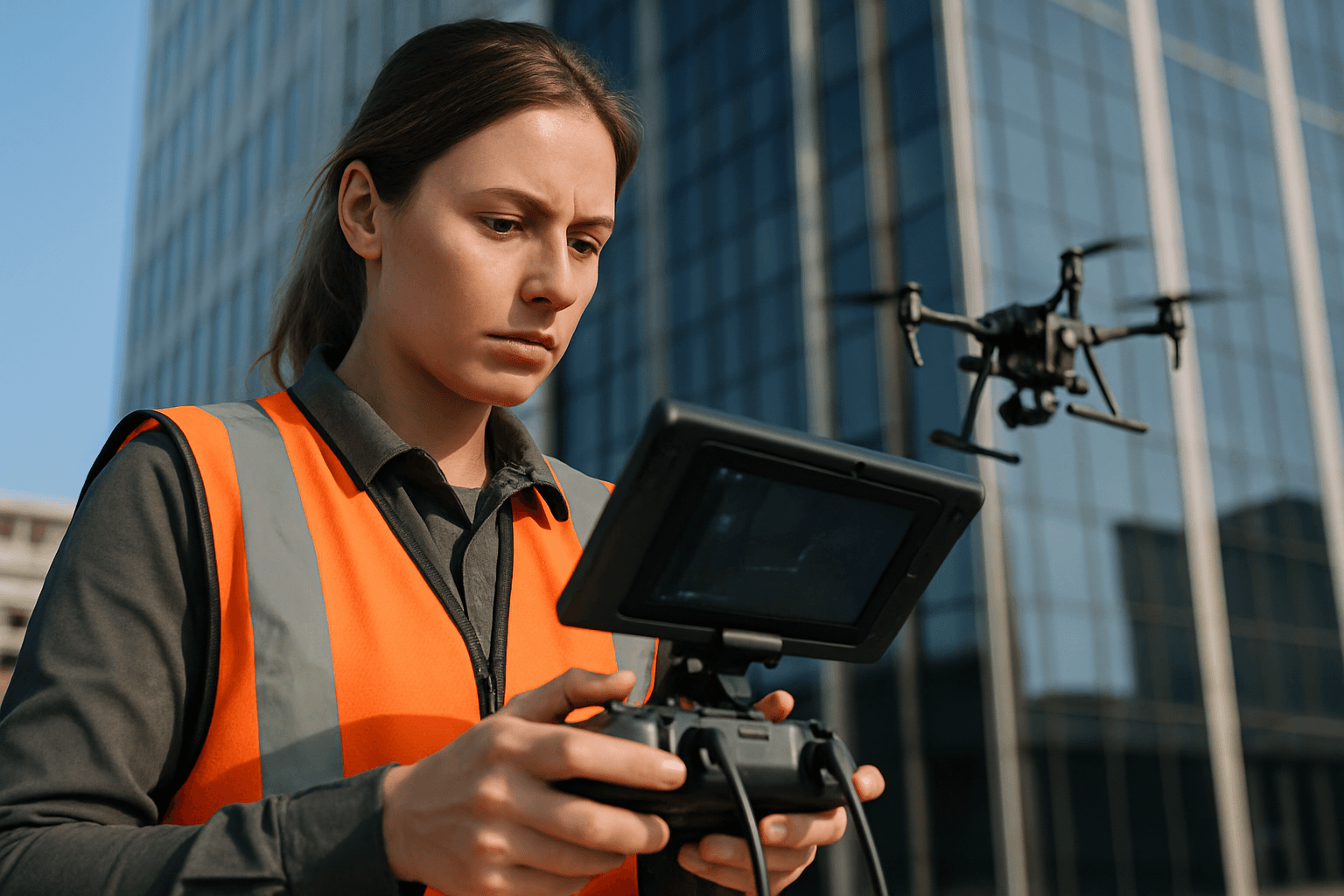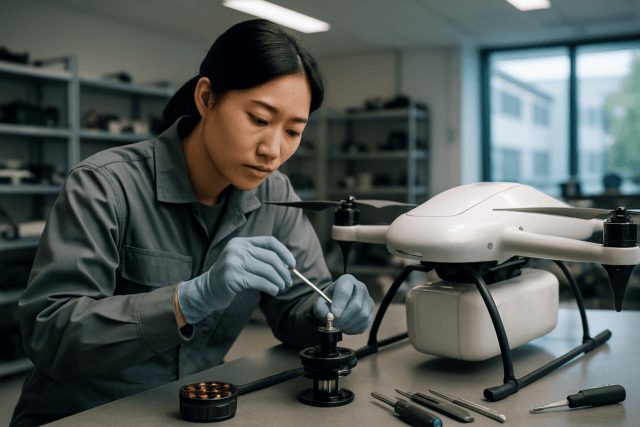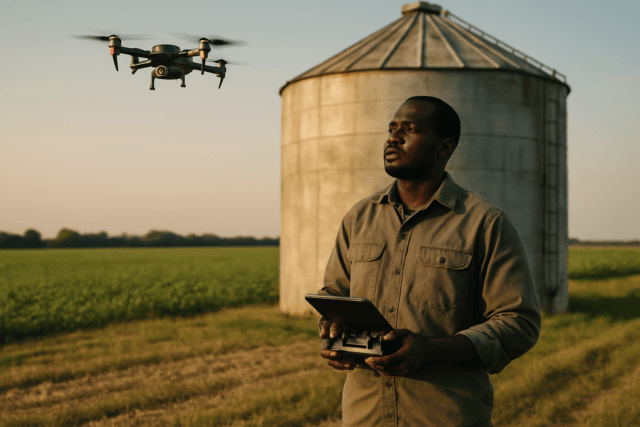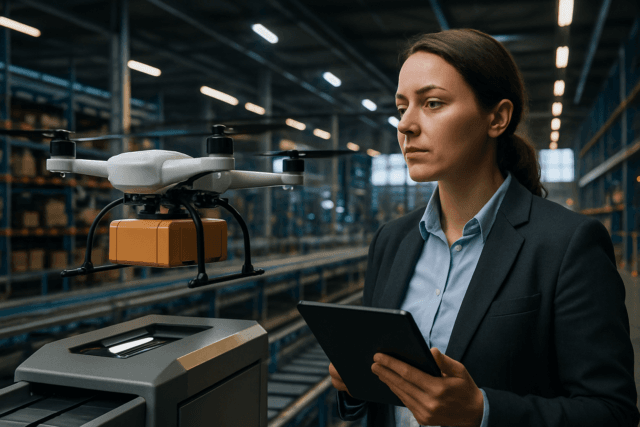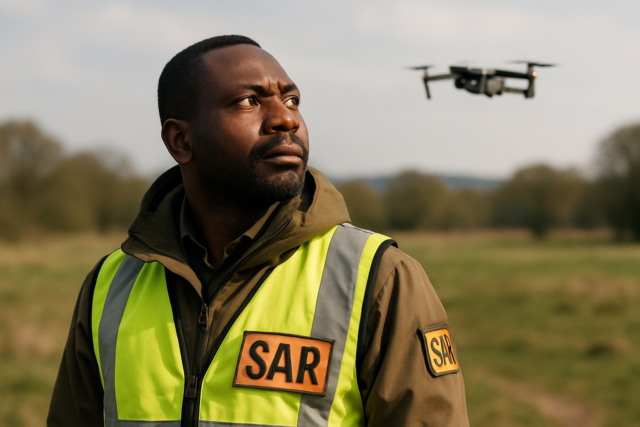The exterior of a building, or its facade, is more than just an aesthetic element; it’s a critical component of structural integrity, energy efficiency, and occupant safety. Historically, inspecting these vast surfaces, especially on high-rise structures or those with intricate designs, has been a labor-intensive, costly, and often hazardous undertaking. However, the advent of drone technology is fundamentally transforming this vital process, offering unparalleled advantages in safety, efficiency, and data quality for building facade inspections.
The Challenges of Traditional Facade Inspections
Before the widespread adoption of Unmanned Aerial Vehicles (UAVs), facade inspections relied heavily on manual methods. These typically involved:
- Scaffolding and Lifts: Erecting scaffolding or deploying cherry pickers is expensive, time-consuming, disruptive to building occupants, and often requires road closures or sidewalk shed setups.
- Rope Access Technicians: Skilled personnel using ropes to rappel down buildings offer flexibility but still involve significant safety risks, especially in adverse weather conditions.
- Ground-Based Visual Inspections: Limited to what can be seen from the ground with binoculars, these methods often miss critical, subtle defects in hard-to-reach areas.
- Safety Hazards: All traditional methods inherently expose human inspectors to risks of falls, accidents, and contact with live wires or falling objects, particularly at great heights.
These traditional approaches often lead to infrequent inspections, allowing minor issues to escalate into major, costly repairs or even safety concerns. The subjective nature of manual inspections can also lead to inconsistencies in reporting.
The Unparalleled Advantages of Drone-Based Facade Inspections
Drones equipped with advanced cameras and sensors are now providing a superior alternative, addressing many of the shortcomings of conventional methods.
Enhanced Safety
One of the most significant benefits of using drones is the dramatic improvement in safety. Drones eliminate the need for human inspectors to work in hazardous conditions at height, significantly reducing the risk of falls, injuries, and accidents. Operators can remain safely on the ground while the drone navigates complex and dangerous areas.
Increased Efficiency and Cost Savings
Drone inspections are considerably faster than traditional methods, capable of surveying large building facades in a fraction of the time. This efficiency translates directly into cost savings by reducing labor hours, eliminating expensive equipment rentals like scaffolding and lifts, and minimizing disruption to building operations or occupants. Faster deployment and data collection mean projects can proceed without delay, allowing for more frequent inspections.
Superior Data Collection and Accuracy
Drones capture high-resolution images and videos, providing precise and detailed visual data of a building’s exterior. This level of detail enables the detection of minute defects such as hairline cracks, spalling, erosion, water damage, sealant failures, and loose components that might be invisible from the ground or missed during manual inspections. The data collected can be geo-referenced, accurately pinpointing the location of anomalies on the building.
Unmatched Accessibility
Drones can reach areas that are otherwise difficult, dangerous, or even impossible for humans to access, including complex architectural designs, high-rise sections, or structures in congested urban areas. This ensures comprehensive coverage, leaving no part of the facade uninspected.
Technology at Play: Drones and Sensors for Facade Inspections
The effectiveness of drone facade inspections lies in the sophisticated technology they employ:
Types of Drones
- Multi-Rotor Drones (e.g., DJI Matrice series, DJI Mavic Enterprise series): These are the most common choice due to their agility, ability to hover, and precise maneuverability, making them ideal for detailed visual inspections of facades, roofs, and other complex structures. Models like the DJI Matrice 300 RTK offer high-end features, longer flight times, and the capacity to carry multiple sensors. The DJI M350 RTK is considered a gold standard for inspections, offering flexible payloads and RTK accuracy.
- Fixed-Wing Drones (e.g., SenseFly eBee X): While less agile for close-up detail, fixed-wing drones are excellent for inspecting very large buildings or multiple structures, as they can cover expansive areas efficiently with longer flight times.
Advanced Sensors and Payloads
Modern inspection drones are equipped with a variety of sensors beyond standard high-resolution RGB cameras:
- High-Resolution Visual Cameras: Capable of capturing 20MP still shots and 4K or better videos, often with gimbals for stable, angled views.
- Thermal Imaging Cameras: These detect temperature differences, revealing issues like water intrusion, insulation defects, hidden moisture, and electrical faults that are not visible to the naked eye.
- LiDAR Sensors: Used for creating highly accurate 3D models and point clouds of structures, providing precise measurements and enabling detailed analysis of structural integrity.
- Zoom Capabilities: Drones like the EVO Max 4T XE offer significant optical and hybrid zoom, allowing for detailed inspection from a safe distance.
The Drone-Based Facade Inspection Workflow
A typical drone-based facade inspection follows a structured workflow to ensure comprehensive data collection and actionable insights:
- Mission Planning: This crucial first step involves identifying the target building, outlining the flight path, setting parameters like altitude, distance from the building, camera angles (e.g., oblique angles to capture facades), and desired image overlap (often 70-80% for vertical overlap). Software platforms like Hammer Missions or DroneDeploy allow for pre-programming automated flight paths.
- On-Site Data Capture: FAA-certified drone pilots deploy the UAV, executing the planned mission. Drones often use advanced navigation systems with IMU, UWB, LiDAR, and stereo cameras for obstacle avoidance and precise positioning, even in complex urban environments. Live video streaming can allow ground personnel to observe the inspection in real-time.
- Data Processing: Captured images and videos are uploaded to specialized software platforms. These platforms can stitch images together to create orthomosaics, 2D maps, and highly accurate 3D models or digital twins of the building.
- Analysis and Reporting: This is where the raw data transforms into actionable intelligence.
- Manual Annotation: Inspectors can review the high-resolution imagery and 3D models to manually identify and annotate defects, classifying them by type and severity.
- AI-Powered Analysis: Increasingly, artificial intelligence (AI) and machine learning (ML) algorithms are employed for automated data analysis and defect identification. AI can be trained to detect, monitor, and classify various types of damage (e.g., cracks, spalling, efflorescence, water stains) and even different building materials. This significantly speeds up the analysis process and ensures consistency.
- Interactive Reports: The processed data and analysis, including annotated images, 3D models, and defect locations, are compiled into comprehensive, web-based, or PDF reports that can be shared with stakeholders for decision-making and repair planning.
Challenges and Limitations
Despite the significant advantages, drone-based facade inspections do face some challenges:
- Regulatory Restrictions: Drone operations are subject to regulations, especially in urban areas, regarding airspace, altitude, and proximity to buildings. Obtaining necessary flight approvals can be part of the workflow.
- Initial Investment: High-end drone equipment and specialized software can represent a considerable initial investment.
- Privacy Concerns: Capturing detailed imagery of buildings, particularly in residential or mixed-use areas, can raise privacy concerns. Data anonymization techniques are sometimes used.
- Skilled Personnel: Operating drones and interpreting the collected data requires skilled pilots and data analysts.
- Physical Examination Limits: While drones excel at visual data collection, they cannot fully replace physical examinations that involve “sounding and probes” to accurately identify certain façade defects. Drones are best seen as a powerful tool to complement, rather than completely replace, human expertise.
The Future of Drone Facade Inspections
The future of drone technology in building facade inspections is bright, with continuous advancements on the horizon:
- Advanced AI and Machine Learning: Further integration of AI and ML will lead to even more accurate, automated defect detection, classification, and predictive maintenance capabilities. AI models will become more sophisticated in identifying subtle patterns and abnormalities that escape the human eye.
- Digital Twins: The creation of comprehensive “digital twins” of buildings, leveraging drone data, will enable sophisticated analysis of wear and tear, performance degradation, and future maintenance needs, supporting a shift from reactive to proactive maintenance.
- Sensor Fusion: Drones will continue to integrate more diverse and advanced sensors, including hyperspectral imaging and gas detection, to provide richer, multi-dimensional insights into building health.
- Improved Automation and Endurance: Drones with longer battery life, enhanced flight stability, and more autonomous navigation capabilities will further streamline inspections, especially for large and complex structures.
- Regulatory Evolution: As the technology matures and its benefits become more widely recognized, regulatory frameworks are likely to evolve to better support the safe and effective integration of drones into commercial operations.
In conclusion, drones have emerged as a game-changer for building facade inspections, offering a significantly safer, faster, more cost-effective, and data-rich approach compared to traditional methods. By minimizing risks to personnel, improving accessibility, and providing highly detailed and actionable insights, drones are not just a technological advancement but a strategic asset for modern building management and maintenance, ensuring the longevity and safety of our built environment.

